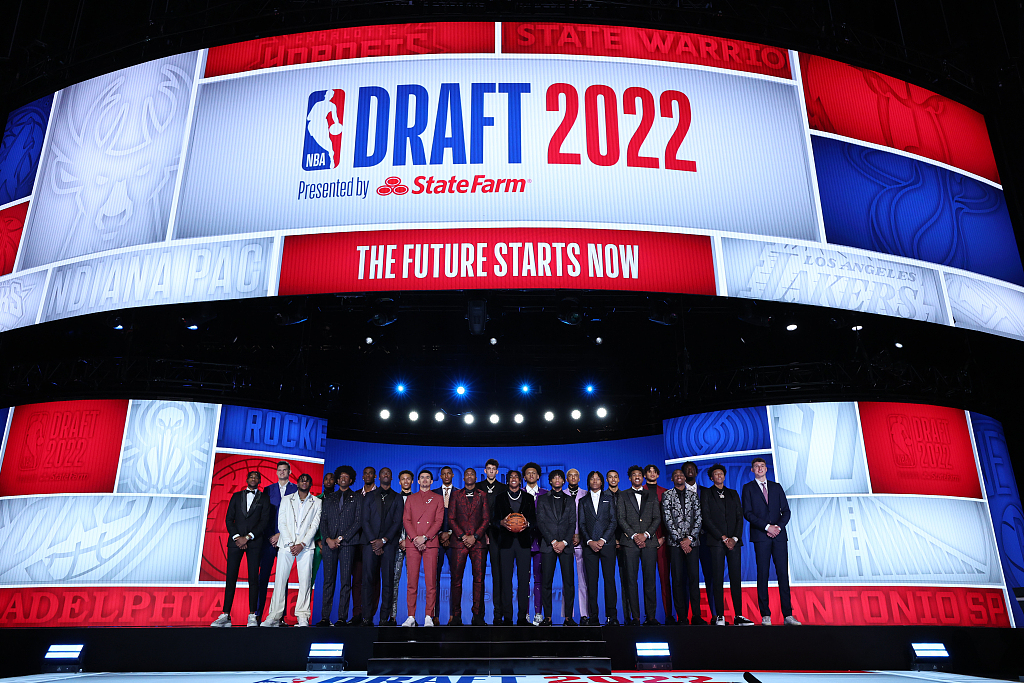
Players who are selected in the NBA Draft at the Barclays Center in Brooklyn, New York City, New York, pose for a group photo, June 23, 2022. /CFP
Players who are selected in the NBA Draft at the Barclays Center in Brooklyn, New York City, New York, pose for a group photo, June 23, 2022. /CFP
The NBA and the National Basketball Players Association (NBPA) are expected to cut the minimum age of draft eligibility from 19 to 18 in the new collective bargaining agreement (CBA), Shams Charania of The Athletic reported on Monday.
If the two sides reach agreement on the rule change, it will end an 18-year drought of players who jump from high school to the NBA, and teams will be able to select high schoolers early as 2024.
Before the NBA set the draft age limit at 19 years old in 2005, the following superstars all entered the league directly from high school: LeBron James, Kobe Bryant, Kevin Garnett, Dwight Howard, Tracy McGrady, Shawn Kemp and Moses Malone (to the American Basketball Association).
Despite the glorious careers of the above players, it was still a high-risk business for NBA teams to draft high school youngsters. That's why the league decided to make players wait at least one year after high school before entering the NBA Draft, which became known as the "one-and-done" rule.
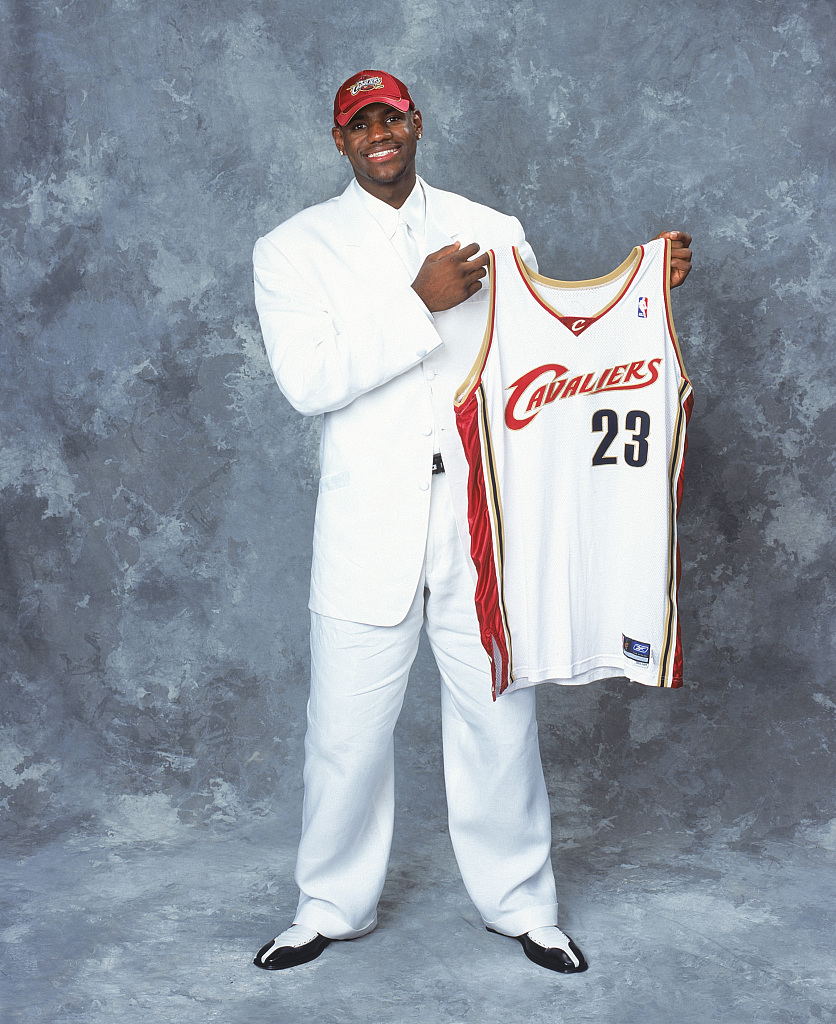
LeBron James is selected by the Cleveland Cavaliers with the first pick in the NBA Draft at Madison Square Garden in New York City, New York, June 26, 2003. /CFP
LeBron James is selected by the Cleveland Cavaliers with the first pick in the NBA Draft at Madison Square Garden in New York City, New York, June 26, 2003. /CFP
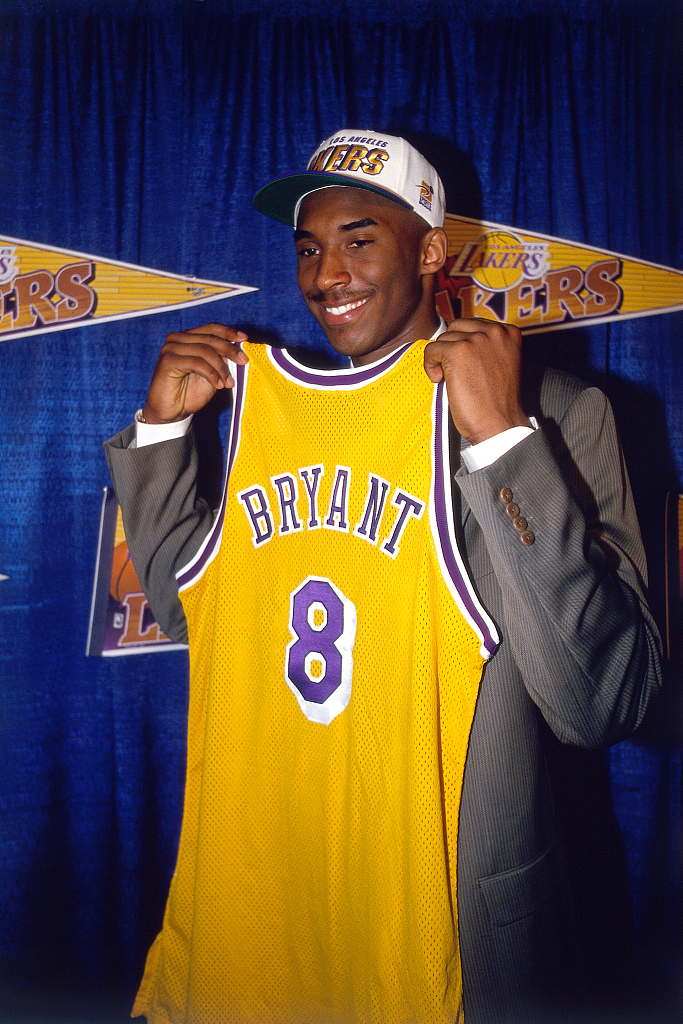
Kobe Bryant is drafted by the Charlotte Hornets with the 13th pick in the NBA Draft and then traded to the Los Angeles Lakers at Continental Airlines Arena in East Rutherford, New Jersey, June 26, 1996. /CFP
Kobe Bryant is drafted by the Charlotte Hornets with the 13th pick in the NBA Draft and then traded to the Los Angeles Lakers at Continental Airlines Arena in East Rutherford, New Jersey, June 26, 1996. /CFP
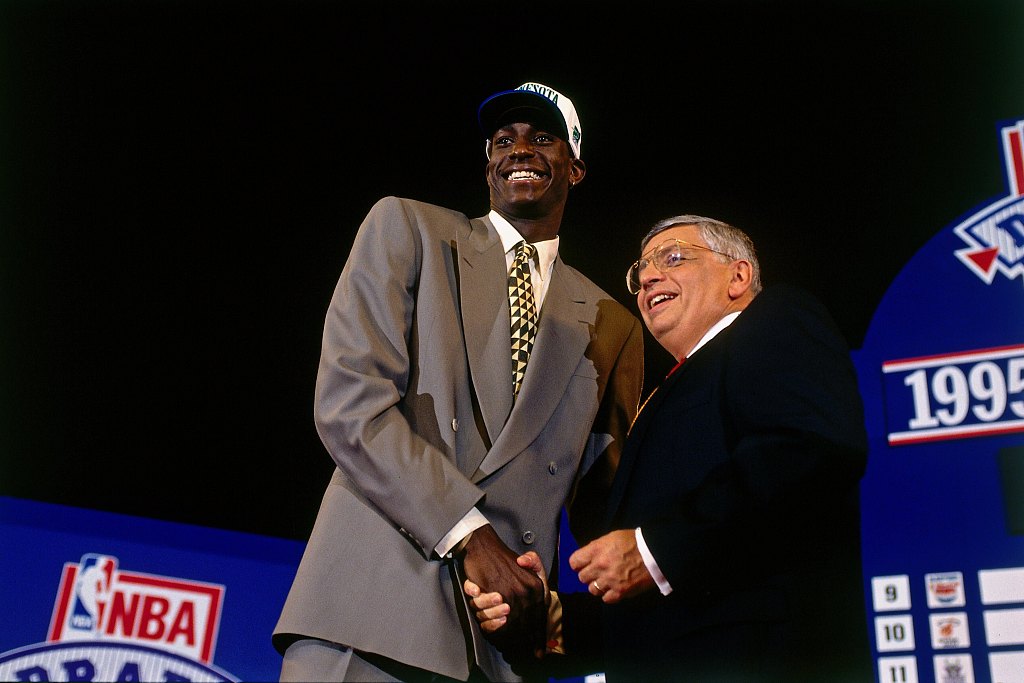
Kevin Garnett (L) is selected by the Minnesota Timberwolves with the fifth pick in the NBA Draft at SkyDome in Toronto, Ontario, Canada, June 28, 1995. /CFP
Kevin Garnett (L) is selected by the Minnesota Timberwolves with the fifth pick in the NBA Draft at SkyDome in Toronto, Ontario, Canada, June 28, 1995. /CFP
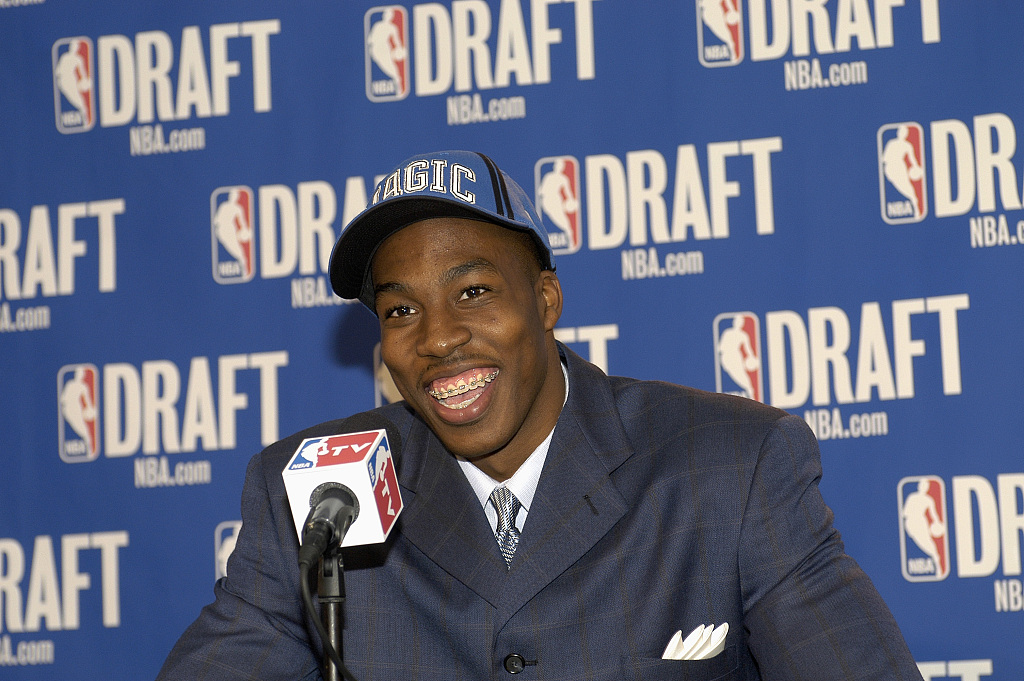
Dwight Howard is selected by the Orlando Magic with the first pick in the NBA Draft at Madison Square Garden in New York City, New York, June 24, 2004. /CFP
Dwight Howard is selected by the Orlando Magic with the first pick in the NBA Draft at Madison Square Garden in New York City, New York, June 24, 2004. /CFP
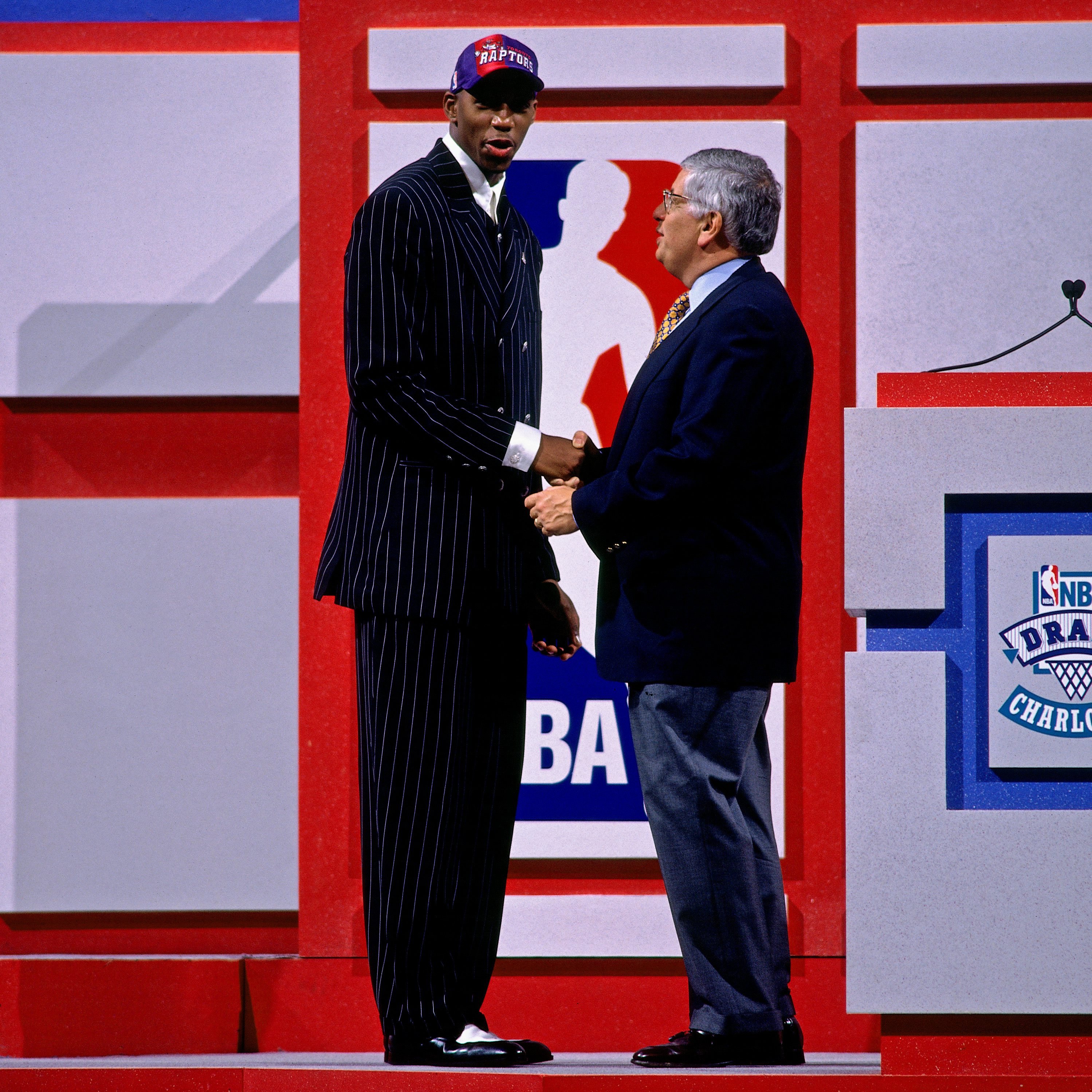
Tracy McGrady (L) is selected by the Toronto Raptors with the ninth pick in the NBA Draft at Charlotte Coliseum in Charlotte, North Carolina, June 25, 1997. /CFP
Tracy McGrady (L) is selected by the Toronto Raptors with the ninth pick in the NBA Draft at Charlotte Coliseum in Charlotte, North Carolina, June 25, 1997. /CFP
The rule kept many players from making millions of dollars one year earlier. Meanwhile, there were not getting paid for playing in college, which reaped all the benefits of having star players. That changed in June 2021 when the Supreme Court ruled that the NCAA could not limit education-related payments to student-athletes and that college players can be compensated through name, image and likeness deals.
Moreover, the NBA established a G League team, Ignite, in 2020 for players who want to skip college and make money. Jalen Green of the Houston Rockets, Jonathan Kuminga of the Golden State Warriors and Dyson Daniels of the New Orleans Pelicans all played for Ignite before they were drafted with high picks.
The NBA and NBPA can both choose to opt out of the current CBA on December 15. The two sides have had multiple rounds of talks over the terms of a new deal. Draft age eligibility is one of the major issues the two sides are negotiating. Others include adding mental health problems to injury reports, making teams pay a harsher luxury tax and stressing player/fan civility.
"Creating generational wealth is critically important in this next chapter of the Union," NBPA executive director Tamika Tremaglio said in an interview with Charania. "It's critical to their legacy. Historically we have been so focused on making money – salary cap, etc. – but we all know that to have money, you've got to invest. We also know that the uncertain lifespan (of an NBA career) makes it crucial to plan for what happens after the ball stops bouncing – creating this generational wealth."

